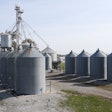
The U.S. Department of Labor's Occupational Safety and Health Administration (OSHA) announced a new National Emphasis Program (NEP) to prevent workplace hazards in warehouses and distribution centers and certain high injury rate retail establishments.
While the animal food manufacturing industry falls under this designation, Gary Huddleston, director of feed manufacturing & regulatory affairs with the American Feed Industry Association (AFIA), said he doesn't expect the program to have a huge impact on the industry.
"None of these NAICS codes include warehousing connected with manufacturing, but that’s not to say that OSHA couldn’t inspect a feed mill with a large warehouse under this NEP," said Huddleston. "For our industry, the focus would be more on larger distribution centers not connected to manufacturing."
OSHA wants to address root causes of worker injuries
In the past 10 years, warehousing and distribution centers have experienced tremendous growth with more than 1.9 million people employed in the industry, said OSHA. The Bureau of Labor Statistics data shows injury and illness rates for these establishments are higher than in private industry overall and, in some sectors, more than twice the rate of private industry.
"Our enforcement efforts are designed to do one thing: lead to permanent change in workplace safety," said Doug Parker, assistant secretary for OSHA. "This emphasis program allows OSHA to direct resources to establishments where evidence shows employers must be more intentional in addressing the root causes of worker injuries and align their business practices with the goal to ensure worker health and safety."
Feed manufacturing is included in the manufacturing NAICS codes 31111 (Animal Food Manufacturing), 311111 (Dog and Cat Food Manufacturing), and 311119 (Other Animal Food Manufacturing), noted Huddleston.
What comprehensive safety inspections will cover
"If a facility receives an inspection under this emphasis program, they should expect OSHA to focus on powered industrial vehicles operations, material handling/storage, walking-working surfaces, means of egress, and fire protection," said Huddleston. "Heat and ergonomic hazards will also be considered and documented during inspections under this NEP."
Huddleston noted facilities should make sure they are in compliance with the following OSHA standards:
- 29 CFR Part 1910, Subpart D, Walking-Working Surfaces
- 29 CFR Part 1910, Subpart E, Exit Routes and Emergency Planning
- 29 CFR Part 1910, Subpart I, Personal Protective Equipment
- 29 CFR Part 1910, Subpart L, Fire Protection
- 29 CFR Part 1910, Subpart N, Materials Handling and Storage
AFIA urges animal feed facilities to allows be prepared for these types of inspections.

















